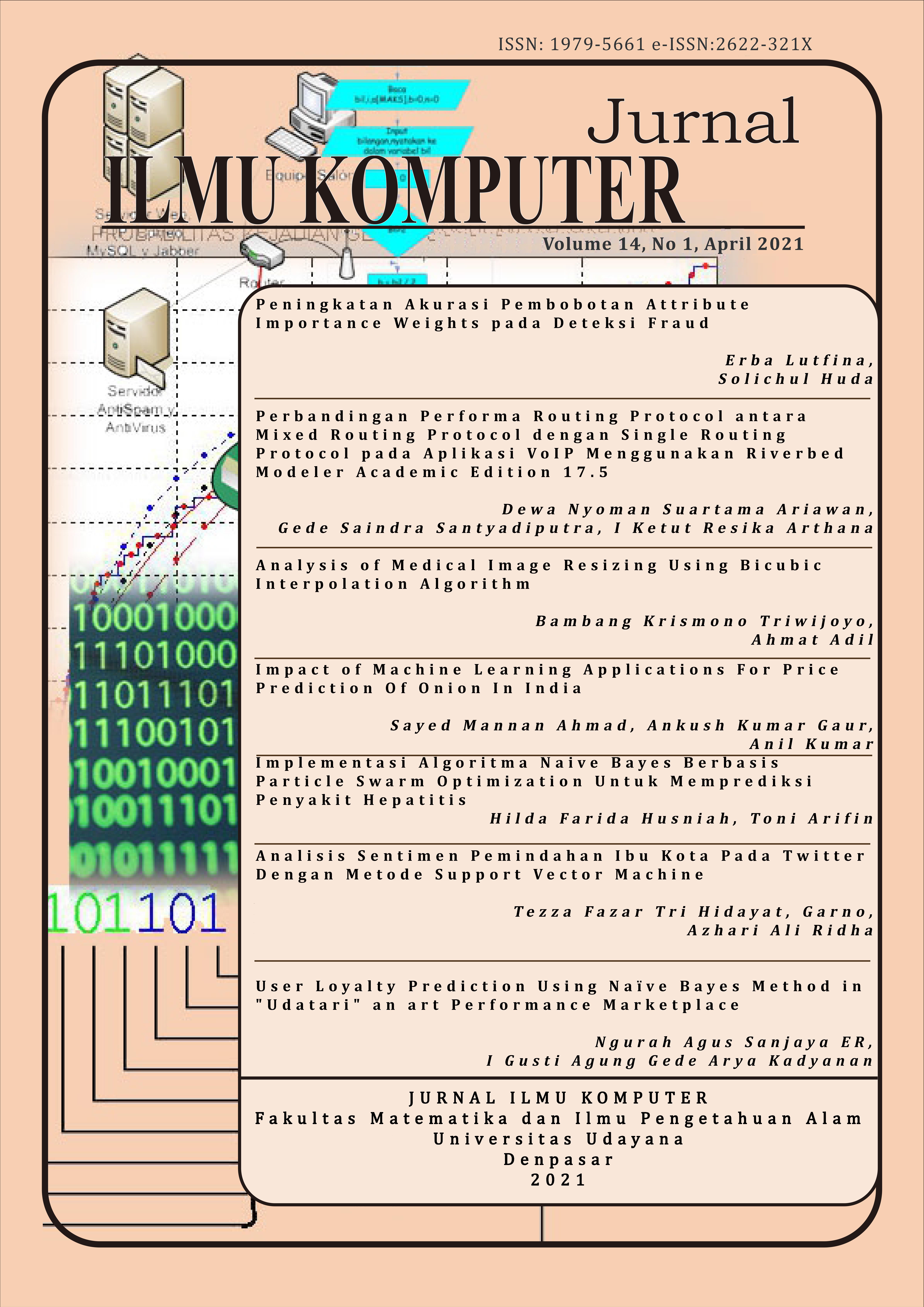User Loyalty Prediction Using Naive Bayes Method in "Udatari" an art Performance Marketplace
Abstract
Udatari is the first traditional dance platform in Indonesia which provides information about traditional events such as, dance tutorials, group dancer and dance attributes. The tight competition in the startup world, requires Udatari as a new startup to manage application users optimally. Knowing loyal users will help startups determine the right marketing strategy. In this study, the method used for clustering is the K-Means method where this method seeks to classify existing data into several groups provided that the data in one group have the same characteristics as each other. The model used for the clustering process is RFM, namely recency, frequency and monetary. The purpose of this clustering is to get the segmentation of users who have different Customer Lifetime Value. The second method for conducting classification is the Naïve Bayes method, where this method predicts future opportunities based on past experiences. The purpose of this classification is to predict new users into the user segmentation obtained from the clustering results.
From the results of this study, the optimum k value for K-Means are 3 clusters with the largest CLV value in the second cluster where testing on this method uses the Silhouette Index. Furthermore, for the test results of the Naïve Bayes method, the average accuracy value is 97.44% where the accuracy of each class is 92.31% for cluster 0 (first cluster), 100% for the second cluster and 100% for the third cluster.
Keywords: K-Means, Naïve Bayes, Loyalty, Segmentation, RFM





 Submissions
Submissions






